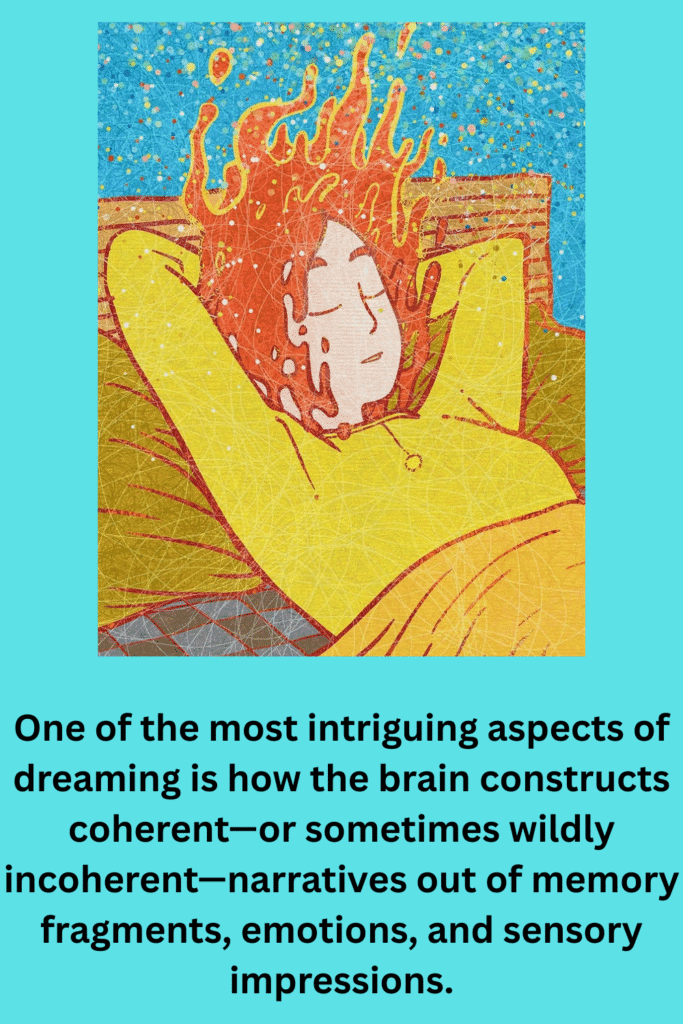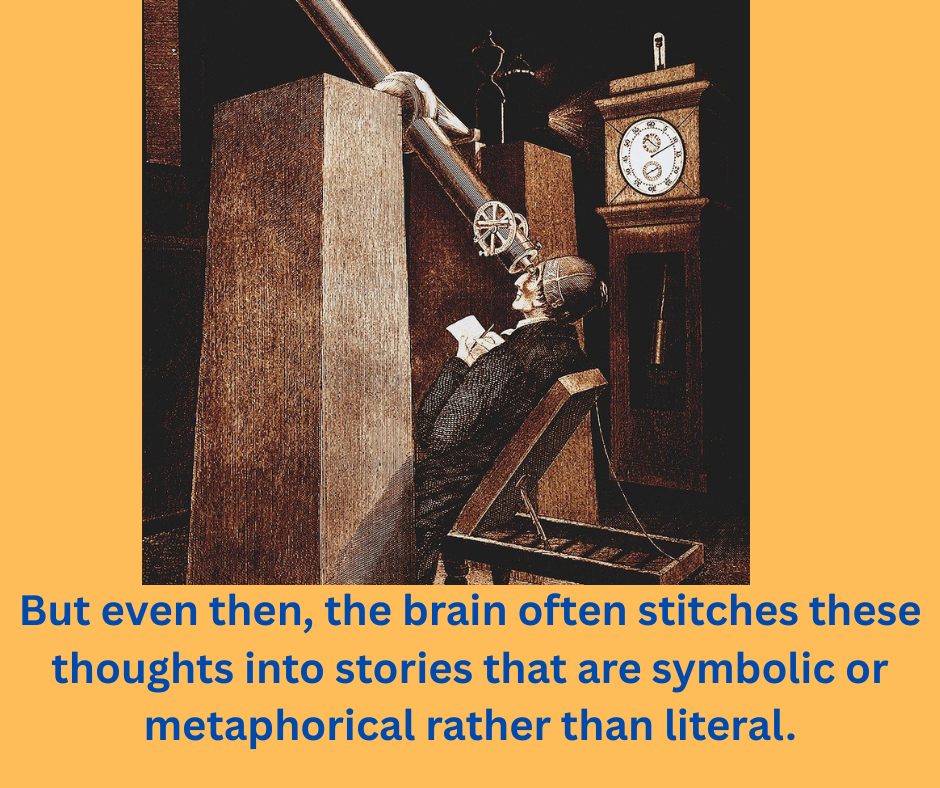the Science Behind Dreaming,An interesting and mysterious aspect of being human is the act of dreaming. For centuries, people have wondered why we dream, what dreams mean, and how our brains create such vivid and often bizarre story lines while we sleep. Modern neuroscience and psychology have begun to unravel the science behind dreaming, shedding light on how and why these nighttime narratives unfold.

In this article, we explore the scientific basis of dreaming, the role of the brain during sleep, and how the intricate story lines in our dreams are created.
Table of Contents
What Are Dreams?
Dreams are series of images, thoughts, feelings, and experiences that usually happen without control in the mind during specific phases of sleep, especially during REM (Rapid Eye Movement) sleep. Although dreams can happen during non-REM phases, the dreams that occur during REM sleep are usually more vivid, unusual, nonadministrative.
Individuals typically experience multiple dreams throughout the night, as REM sleep cycles occur approximately every 90 minutes. the Science Behind Dreaming,The length of each REM sleep phase gets longer as the night goes on, indicating that the most elaborate and extended dreams typically happen during the early morning.
The Science Behind Dreaming: What Happens in the Brain?
Dreaming is deeply rooted in brain activity. Here’s how the brain orchestrates dreams:
1. REM Sleep and Brain Activation
During REM sleep, the brain exhibits significant activity, resembling its state when awake. Important aspects related to dreaming include:
The Limb System: Especially the amygdala and hippocampus, which are associated with emotions and memory.
The Visual Cortex: This part of the brain is responsible for processing images. Even with your eyes closed, it becomes active during REM sleep.
The Prefrontal Cortex: the Science Behind Dreaming,This area governs logic and reasoning and is less active during REM, which is why dreams often defy reality and logic.
This combination of high emotional and visual activity with reduced rational control leads to the surreal and imaginative nature of dreams.
2. Neurotransmitters and Chemicals
Certain neurotransmitters also play a crucial role in dreaming:
Oxyacetylene levels rise during REM sleep, stimulating the cortex and promoting dream formation.
Serotonin and nor epinephrine, which help regulate mood and alertness, decrease during REM. This might clarify the raw and emotional nature of dreams. How Is the Story line in Dreams Created?
One of the most intriguing aspects of dreaming is how the brain constructs coherent—or sometimes wildly incoherent—narratives out of memory fragments, emotions, and sensory impressions. the Science Behind Dreaming,Here’s how this process unfolds:
1. Memory Integration and Reorganization
During sleep, especially REM, the brain processes and consolidates memories from the day. It pieces together bits of recent experiences, long-term memories, and even forgotten impressions to create a tapestry of dream content.
You might dream about a friend from high school mixed with a scene from a movie you watched yesterday, taking place in a location you’ve never actually visited. This blending is part of how the brain reorganizes and integrates memories during sleep.
2. The Role of Emotion
Dream narratives are heavily influenced by emotions. The activation-synthesis theory suggests that the brain tries to create a meaningful narrative from what seems to be random neural impulses.. the Science Behind Dreaming,Because the amygdala (the brain’s emotional center) is highly active during REM, the resulting dreams are often emotionally charged.
Fear, joy, anxiety, love, and sadness can all serve as backdrops for the plots that unfold in our dreams.
3. Randomness and Meaning-Making
Another theory, the continuity hypothesis, suggests that dreams reflect our waking life, including our thoughts, worries, and unresolved conflicts. But even then, the brain often stitches these thoughts into stories that are symbolic or metaphorical rather than literal.

For example, dreaming of falling might not reflect a real-life fall but rather feelings of insecurity or fear of failure.
Why Are Dreams Often So Strange?
The unusual nature of dreams is linked to the decreased function of the prefrontal cortex while in REM sleep this area of the brain handles logical reasoning, critical thinking, and decision-making. When its function is diminished, the brain’s usual filtering processes are compromised, allowing for unusual combinations of people, places, and events.
Consider the act of crafting a movie script without an editor while experiencing total emotional liberation; this represents the function of your brain each night during the REM phase of sleep.
Do Dreams Have Meaning?
the Science Behind Dreaming.This matter remains a topic of discussion. Although Sigmund Freud considered dreams to reflect hidden desires and suppressed emotions, contemporary science favors the view that dreams are integral to the brain’s mechanisms for memory consolidation and emotional management.
Certain scholars propose that dreams:
• help us rehearse how to react to potential threats using the threat-simulation theory.
• Support the process of addressing issues and fostering innovative thought.
• Assist in emotional recovery and memory integration.
Regardless of whether they hold symbolic significance, dreams do mirror the inner processes of our mind.
Lucid Dreaming: A Conscious Experience
One of the most fascinating aspects of dreaming is lucid dreaming—the state in which the dreamer becomes aware they are dreaming and may even gain control over the dream’s story line.
Studies have shown that lucid dreaming involves heightened activity in the collateral prefrontal cortex, allowing the dreamer to be more self-aware than in regular dreams. the Science Behind Dreaming,Techniques like reality checks, dream journaling, and the Wake-Back-to-Bed method can increase the chances of having lucid dreams.
Final Thoughts:
Although science has progressed considerably in grasping the processes occurring in the brain during dreams, numerous inquiries still exist. Why do certain themes recur in our dreams? Why do we forget most of them shortly after waking? What makes some dreams feel more “real” than others?
the Science Behind Dreaming,What is clear is that dreaming is not just a byproduct of sleep—it serves essential functions for our emotional well-being, cognitive health, and memory processing.
As brain imaging technology and sleep research continue to evolve, we may uncover even more secrets about this mysterious world we enter every night.